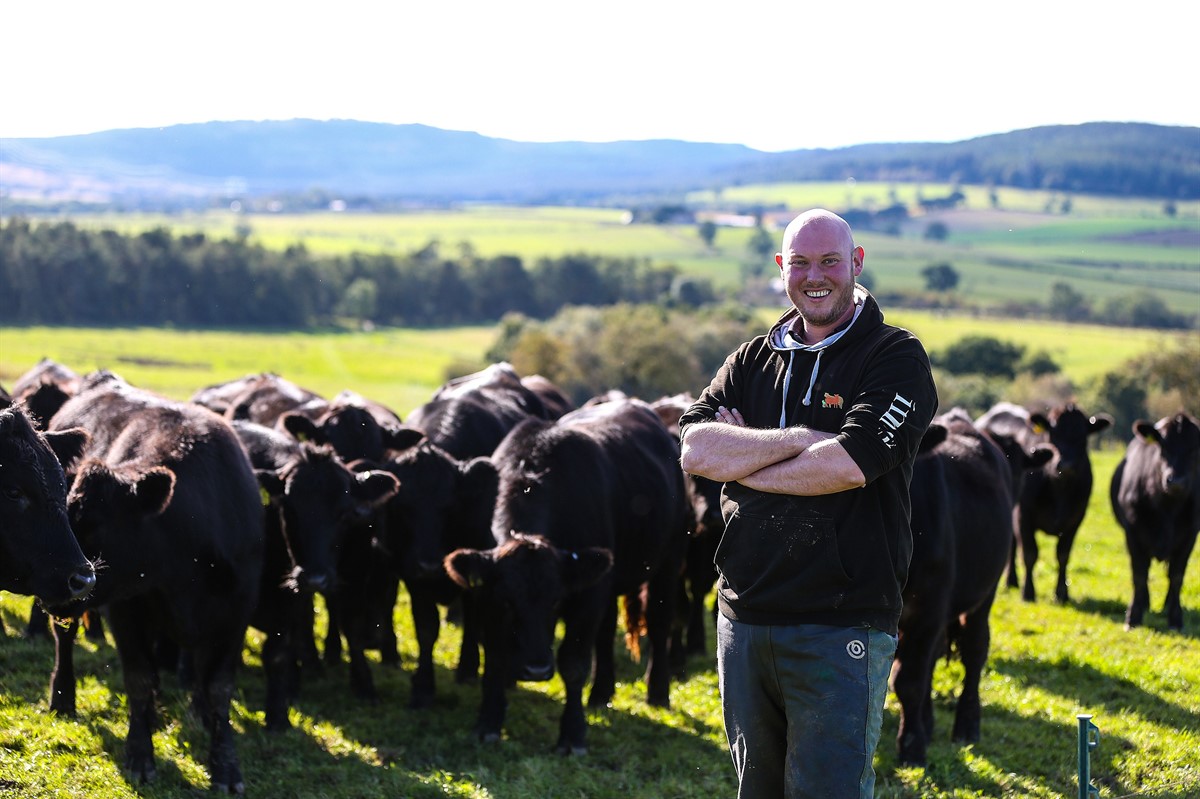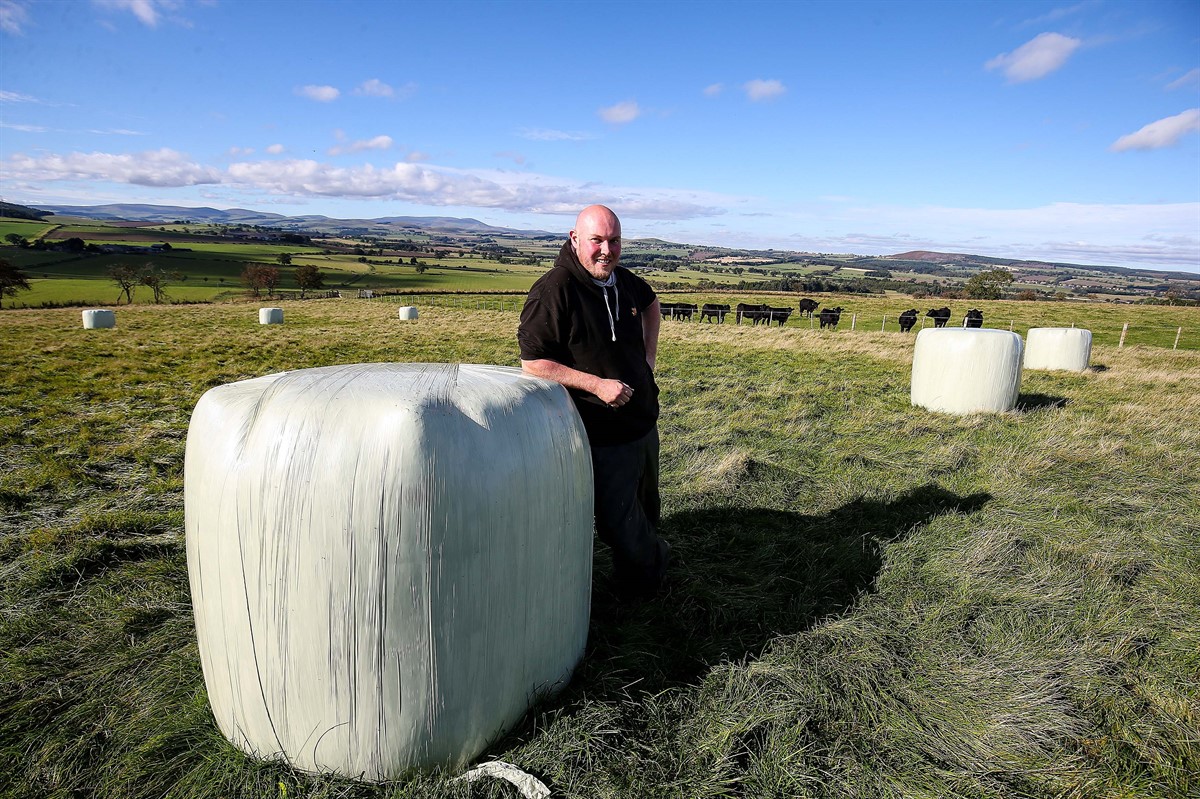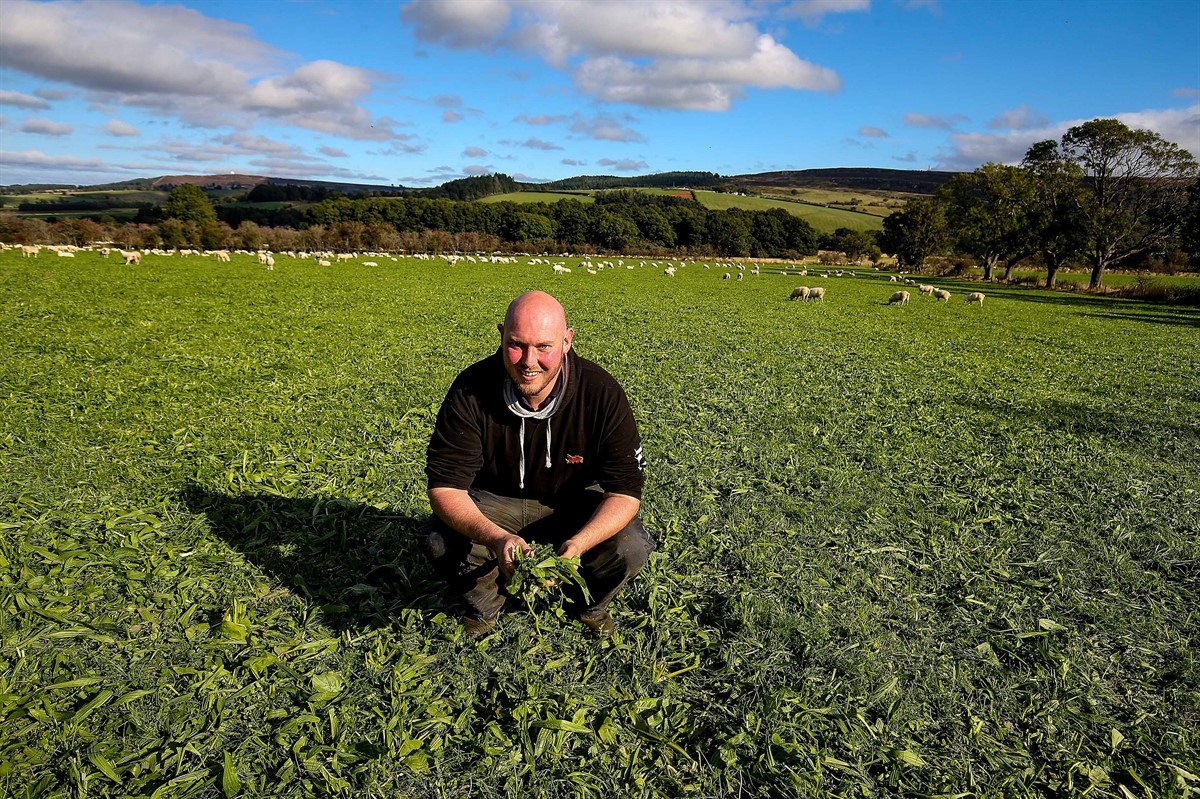James and his family are tenant farmers in North Northumberland and he describes himself as a 'pasture mad' sheep and beef farmer. His determination to put pasture at the heart of his farming business saw him named 'Sheep Innovator of the Year' in the 2021 British Farming Awards and it's an approach he says benefits his livestock, his farm, his soil and local wildlife, as well as dramatically reducing his diesel and tractor use.
Here's how it works:
James' specialist subject on Mastermind would definitely be pasture management and enrichment. His goal all the time is to graze the grass at the optimum time, with short grazing periods followed by a long rest. At peak growing season he aims for 18 days' rest but in the winter this rises to 150 days. This helps the plants maximise their ability to store carbon - growing lush above ground and producing a strong, dense root structure to build organic matter in the soil and so boost soil health.
Increasing the diversity of plants in the pasture is also crucial, he says, not only providing better nutrition for his animals but also a boost for the farm's insect populations.
Alongside grass and silage, James also uses vegetable crops - fodder beet, kale and swede - to add into the feed given to his sheep and young cattle. In a drive to further improve soil health, James aims to minimise soil disturbance by planting his crops straight into his unploughed fields. This has an additional benefit of making the soil more resilient when it is being grazed and less prone to damage during the wetter months.
The final piece in the jigsaw of James' approach to making his livestock farm as sustainable as possible is the genetic performance of his animals. As a result he captures a huge amount of data on every animal born and living on the farm - analysing everything from which ewes make the best mothers to the methane output of individual animals.
Animal genetics
The flock and herd development work that James does has the ultimate goal of achieving animals that are cost effective to rear, naturally achieve the necessary weights with less feed and produce fewer greenhouse gas emissions.
He is currently gathering data on 22 traits in the sheep flock for example, with new areas under development.
Given that the rams he sells - roughly 250 a year - will mate with tens of thousands of ewes a year, the impact of a good breeding programme can be considerable in helping the wider farming industry feed a growing number of people while minimising the impact on the environment. It can also help farm businesses become more financially resilient, with lower costs that make them less vulnerable to fluctuating market conditions.
Promoting local food
James is so passionate about the food he is producing, he is now investing in a new on-farm facility that will allow him to offer both prime meat cuts and ready meal options direct to the public.
This is a huge challenge for him and means a steep learning curve, but he says the birth of his daughter and the natural desire to cook healthily for her has spurred him on to develop this new enterprise.
"Achieving our net zero aspirations as a country will mean using more local and seasonal British food," he said. "This is a really exciting project that will allow us to play a fuller part in offering people access to the food we are so proud to produce as well as much more information about exactly how it has been produced.
"British livestock farmers have such a fantastic story to tell, I'm determined to do my bit to showcase just why we pride ourselves on being leaders in climate friendly food production."



